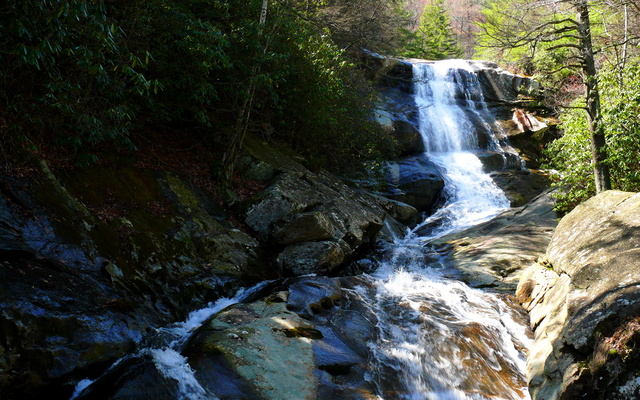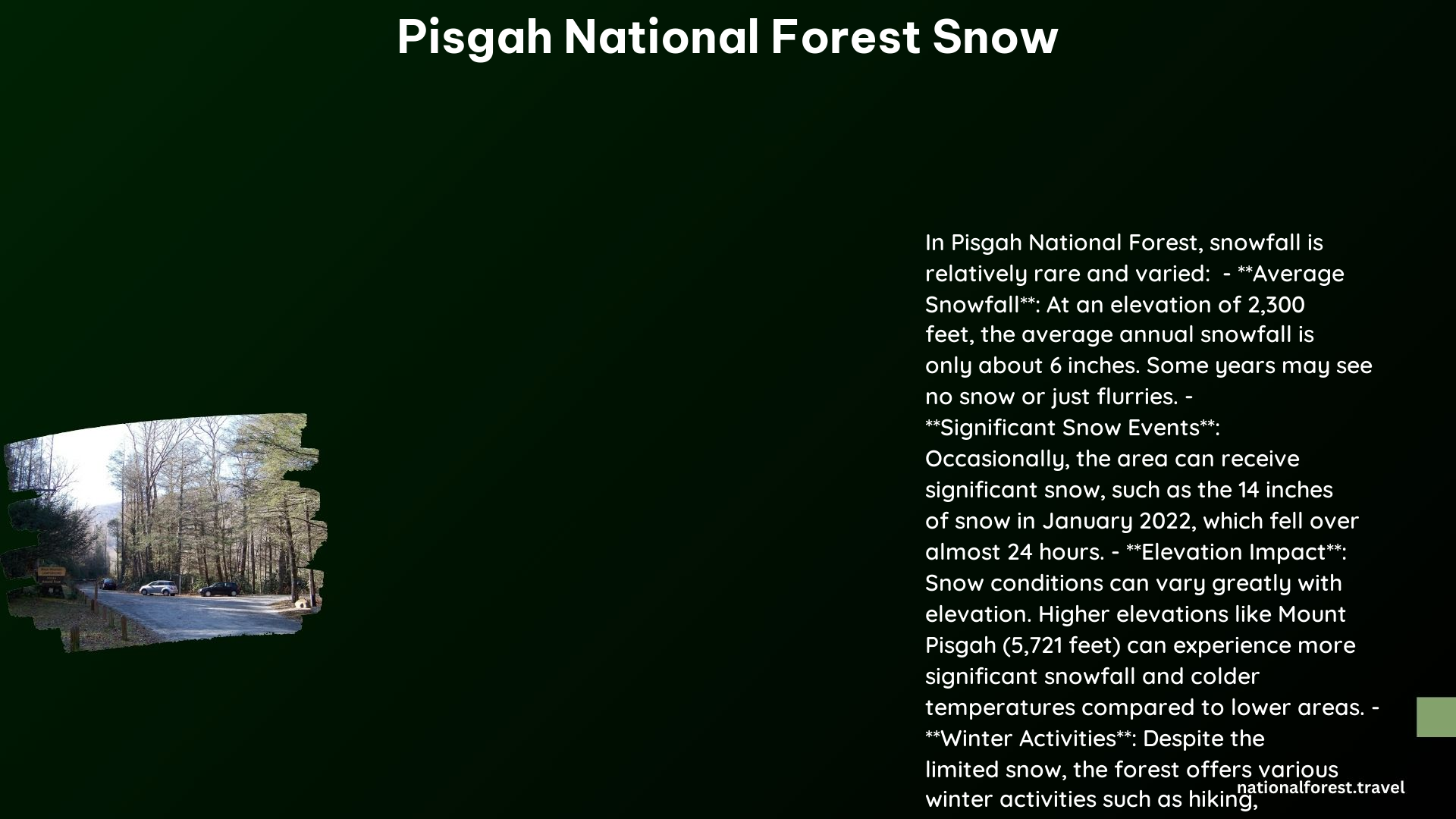Pisgah National Forest transforms into a serene winter landscape when snow blankets its rugged terrain. With an average annual snowfall of 6-7 inches, this North Carolina gem offers unique opportunities for winter recreation and breathtaking scenery. From snow-covered trails to frozen waterfalls, Pisgah National Forest in winter provides a magical experience for outdoor enthusiasts and nature lovers alike.
What is the typical snowfall pattern in Pisgah National Forest?

Pisgah National Forest experiences a moderate snowfall pattern, with most accumulation occurring during the winter months. Here’s a breakdown of the average monthly snowfall:
| Month | Average Snowfall |
|---|---|
| January | 2.9 inches |
| February | 1.9 inches |
| March | 0.5 inches |
| November | 0.1 inches |
| December | 0.6 inches |
The forest typically sees no significant snowfall from April through October. While these averages provide a general idea, it’s important to note that snowfall can vary significantly from year to year. Occasionally, the area experiences more substantial snow events, such as the 14-inch snowfall in January 2022.
Where are the best winter hiking trails in Pisgah National Forest?

Pisgah National Forest offers several stunning trails that are particularly beautiful during the winter months. Here are some top recommendations:
- Looking Glass Rock Trail
- Length: 6.5 miles round trip
- Difficulty: Moderate to strenuous
-
Features: Panoramic views, potential frozen waterfalls
- Length: 4.5 miles round trip
- Difficulty: Moderate
-
Features: Mountain and valley views, possible icy sections
-
Moore Cove Falls Trail
- Length: 1.5 miles round trip
- Difficulty: Easy to moderate
-
Features: 50-foot waterfall, potentially frozen in winter
-
Cedar Cliff Trail
- Length: 2 miles round trip
- Difficulty: Moderate
- Features: Scenic views, snow-covered and icy sections
These trails offer diverse experiences, from challenging hikes with rewarding vistas to easier walks leading to frozen waterfalls. Always check trail conditions and come prepared with appropriate winter gear.
What weather conditions should hikers expect in Pisgah National Forest during winter?
Winter weather in Pisgah National Forest can be variable and challenging. Hikers should be prepared for a range of conditions:
-
Temperature: Daytime highs typically range from mid-40s to mid-50s Fahrenheit (7-13°C), while nighttime lows can drop to mid-20s to mid-30s Fahrenheit (-4 to 1°C).
-
Precipitation: Winter months see increased precipitation, averaging 5-6 inches (127-152 mm) per month. This can come in the form of rain, snow, or sleet.
-
Wind: Higher elevations can experience strong winds, increasing the wind chill factor.
-
Visibility: Fog and low clouds are common, especially at higher elevations, potentially reducing visibility.
Always check the latest weather forecast before heading out, and be prepared for rapidly changing conditions. The National Weather Service provides up-to-date information on weather advisories and potential winter storms.
What amenities are available for winter hikers in Pisgah National Forest?
Pisgah National Forest provides several amenities to support winter hikers:
- Parking:
-
Designated parking areas are available at major trailheads, including Looking Glass Rock, John Rock, and Moore Cove Falls.
-
Restroom Facilities:
-
Some trailheads and visitor centers offer restroom facilities, but availability may be limited during winter months due to maintenance.
-
Visitor Centers:
-
The Pisgah Ranger District Office provides information, maps, and updates on trail conditions.
-
Guided Tours:
-
Local outfitters and the Pisgah Ranger District may offer guided winter hikes or snowshoeing tours, providing a safe and educational experience.
-
Emergency Services:
- Forest Service rangers and local emergency services are available, but response times may be longer in winter conditions.
How can hikers stay safe while exploring Pisgah National Forest in snow?
Safety is paramount when hiking in winter conditions. Here are essential tips for a safe winter hiking experience in Pisgah National Forest:
- Plan Ahead:
- Check weather forecasts and trail conditions before your trip.
-
Inform someone of your hiking plans and expected return time.
-
Dress Appropriately:
- Layer clothing to regulate body temperature.
- Wear waterproof and insulated boots.
-
Bring extra warm, dry clothes.
-
Pack Essential Gear:
- Carry a map, compass, and GPS device.
- Bring a first-aid kit, emergency shelter, and fire-starting materials.
-
Pack extra food and water.
-
Start Early:
- Begin your hike early to ensure you finish before dark.
-
Winter days are shorter, so plan accordingly.
-
Stay on Marked Trails:
- Snow can obscure trail markers, so pay close attention to your route.
-
Avoid venturing off-trail, especially in snowy conditions.
-
Be Prepared for Ice:
- Bring traction devices (like microspikes) for icy trails.
-
Use trekking poles for added stability.
-
Monitor Weather:
- Be prepared to turn back if conditions worsen.
- Watch for signs of hypothermia and frostbite.
By following these guidelines, hikers can safely enjoy the winter beauty of Pisgah National Forest while minimizing risks associated with snow and cold weather.
References:
1. https://www.weatherworld.com/climate-averages/nc/pisgah+forest.html
2. https://www.bestplaces.net/climate/zip-code/north_carolina/pisgah_forest/28768
3. https://en.wikipedia.org/wiki/Pisgah_Forest,_North_Carolina
